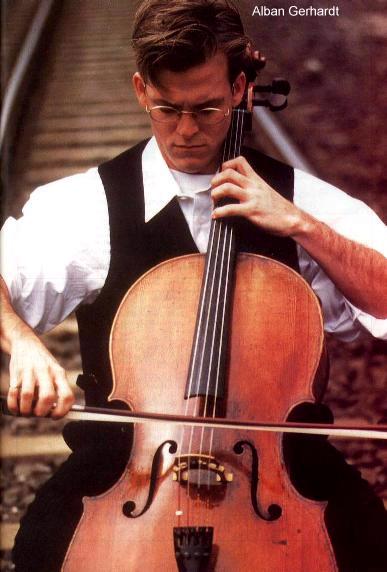
The cello, also called the violoncello is a large, low-pitched musical instrument of the violin family, the true bass of the violin. However, in build it differs somewhat, the ribs being proportionately much deeper and the much higher bridge standing on legs rather than feet. It is about 27 ½ inches long (47 inches with the neck). The neck is raked back at a sharper angle to allow for the height of the bridge. The cello is held between the knees while it rests on an end pin, which is telescoped through the tailpin and can be clamped in any position to adjust the height of the instrument above the floor. It has four strings, pitched C-G-D-A upward from two octaves below middle C and has a very wide range of four octaves.

The cello has always been a vital part of the orchestra, filling out the bass-lines above the double-basses and the mainstay of the string quartet or piano trio. It is currently enjoying something of a boom, in repertoire, recording, and playing, with plenty of excellent players around. This is probably due to the similarity of the cello to the human shape and voice. As composer Jonathan Harvey puts it, "The cello is very anthropomorphic. It has the size and shape of a human being; more than any other instrument, and matches the male and female voice range almost exactly".
The earliest cellos were developed during the 16th century, as a member of a whole family of different-sized instruments, known as "viole da braccio." The earliest were larger than the standard modern cello, but gradually smaller ones from Antonio Stradivari became a standard between 1707 and 1710. The bottom string became silver-covered, which facilitated a more advanced technique without loss of sound quality. Click the player below for a short cello sound sample.

The 18th century saw the neck and fingerboard lengthened and curve more sharply, with the bridge raised, and the use of thinner, tauter strings, giving greater projection and more responsive tone. The cello bow's development was more dramatic. Between 1750 and 1785, Francois Tourte fixed the length of the bow to 73 cm, developing a concave bowing stick. This led to greater projection for larger concert rooms and, at the same time, a more extroverted level of virtuosity. The Tourte bow facilitated a springing ability, which, in turn, generated a more brilliant bowing technique.
Notable works for the instrument include the Solo Cello Suites of J.S. Bach. The 18th century saw several major cello concertos by Vivaldi ( who wrote 27 concertos for cello and orchestra), Carl Stamitz, CPE Bach, and Hayden ( who wrote many string quartets). The cello was not thought of as a solo instrument until relatively recently. Brahms was so amazed by Dvorak's Cello Concerto(incidentally a work overflowing with melancholic tenderness, passion and nostalgia) in 1895 that he said, "If only I'd known it was capable of that! I would have written a concerto myself." The number of cello pieces from the 19th century that remain in the repertoire is really very small: A Schumann Concerto, the Rococo Variations by Tchaikovsky, two Brahms Sonatas, but not really very much else.
The sonata has remained a vital genre well into this century, with major contributions from Debussy (1915), a much under-valued work from Bridge (1913), Hindemith (1919), Shostakowich (1934), Elliot Carter (1948), Prokofiev (1951), Britten (1961) and so on. Still, by far the most popular concerto is by Elgar which explores the lyrical side of the cello, though the second movement is brilliantly fleet-footed. At one period in 1988, it occupied the top three places in the classical charts. It is an emotional farewell to the old order that Elgar had seen destroyed by the First World War, and found its supreme interpreter in Due Per.
"The moment I heard the first notes, I was overwhelmed. I felt as if I could not breathe. There was something so tender, beautiful and human - yes, so very human - about the sound." These were Pablo Casals's first impressions on hearing a professional cellist. "That is the instrument I want to play." he said, starting a career as one of this century's greats. He brought cello technique forward: he opened out his shoulders, freeing out expressive possibilities for the players. Another top cellist is Emanuel Feuermann who laid the foundations upon which we judge instrumentalists today. His left hand was particularly remarkable and travelled along the fingerboard in much the way of a violinist. However, he career was cut short by his early death during a routine operation. Other cellists include, Mstislav Rostropovich (who has a huge, very Russian sound), Yo-Yo Ma (a famed chamber musician, with Issac Stern and Emmanuel Ax and a distinguished concerto soloist), Jacqueline Du Pre and Beatrice Harrison.
